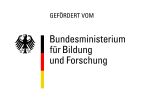Project description
DAM pilot mission: Exclusion of mobile bottom-contact fishing in marine protected areas of the German EEZ of the North Sea and Baltic Sea (MGF North Sea and MGF Baltic Sea)
The German Exclusive Economic Zone (EEZ) of the North and Baltic Seas includes ten Natura 2000 areas. The term Natura 2000 refers to a coherent network of protected areas within the European Union. Together with the Birds Directive, the so-called Fauna-Flora-Habitat Directive regulates the protection of endangered wild plants and animals in their natural habitats in the Natura 2000 areas. Since September 2017, the ten marine Natura 2000 areas of the EEZ have been nationally protected as nature reserves by six reserve-regulations. Marine nature reserves are reported internationally as marine protected areas (MPA). Overall, the MPAs “Doggerbank”, “Borkum Riffgrund” and “Sylter Außenriff – Östliche Deutsche Bucht” cover an area of 7,920 km² and thus approx. 28 percent of the North Sea's EEZ. The MPAs in the EEZ of the Baltic Sea "Fehmarnbelt", "Kadetrinne" and "Pommersche Bucht - Rönnebank" have a combined area of 2472 km², which is around 55% percent of the much smaller EEZ in the Baltic Sea.

Marine Protected Areas
The exploitation of marine resources, such as recreational fishing and commercial fishing, are regulated inside MPAs through management plans that list protective measures and their implementation. Protective measures in MPAs are not uniformly regulated worldwide, but follow a prescribed legal framework within Europe. In general, exploitation in the MPA are permitted if they correspond to the achievement of the area-specific protection goals. As a result, in some MPAs exploitations such as fishing are not regulated, while in others limited or closed seasons are imposed, while in still other MPAs there is a complete fishing ban. The federal government is responsible for implementation in the Natura 2000 areas within the EEZ - represented by the “Bundesamt für Naturschutz” (BfN) and the “Bundesministerium für Umwelt, Naturschutz und nukleare Sicherheit“ (BMU) The BfN is directly responsible for the implementation of the management plans for the protected areas in the EEZ. For the implementation of the actual protective measures the respective competent authorities are responsible (https://www.bfn.de/themen/meeresnaturschutz/nationale-meeresschutzgebiete.html). The management plans for the three MPAs in the North Sea EEZ came into force in May 2020, while the Baltic Sea MPAs are in so-called participation procedures.
Mobile bottom-contact fishing

Bottom trawls are often used in so-called mobile bottom-contact fishing (MGF) in the Baltic Sea. The main effects on marine ecosystems are their otter boards, which are used to keep the net horizontally open. Otter boards plow through the sediment and thereby have a negative impact on the sediments and organisms on the sea floor. Therefore, this fishing method will be excluded in the German and European MPAs in the next years - at least in parts of the MPAs. The negotiations on the exclusion of MGF are currently taking place within the framework of the European common fisheries policy at EU level and in consultation with neighboring countries.
Our research

The MGF North Sea and MGF Baltic Sea research projects now offer the unique opportunity to investigate how benthic habitats and organisms develop after the exclusion of MGF in the future. For this purpose, the current state of the areas has to be examined and documented first as a reference, in order to investigate how communities, seabed morphology, biogeochemistry of the marine sediments and exchange processes between sediment and water column develop without further human disturbances. Such influences on MPAs and marine ecosystems have so far been understudied and the results provide an important basis for future management of the protected areas in the North and Baltic Sea.
The scientific work planned in the projects follows a modern, interdisciplinary approach that includes all components of the ecosystem in order to assess the consequences of an MGF exclusion. The data from the first sampling should form the basis of future monitoring in the areas, with which status changes can be recognized and countermeasures or further protective measures can be taken if necessary.
MGF Baltic Sea - part of the DAM research mission "Protection and Sustainable Use of Marine Areas"
The pilot missions, which are being conducted in close cooperation with the „Bundesamt für Naturschutz“ (BfN), is part of the research mission "Protection and Sustainable Use of Marine Areas" of the German Marine Research Alliance (Deutsche Allianz Meeresforschung - DAM). DAM brings together 22 leading German marine research institutions with the aim of strengthening the sustainable use of the coasts, seas and oceans through research, data management and digitalisation, infrastructures and transfer. To this end, the DAM is working together with its member institutions to develop solution-oriented knowledge and to communicate potential courses of action in politics, business and civil society. It is funded by the federal government and the northern German states of Bremen, Hamburg, Mecklenburg-Western Pomerania, Lower Saxony and Schleswig-Holstein.

NEWS
Exclusion of MGF in MPAs of the Baltic Sea confirmed by the EU!
MGF-Ostsee among Top 10 in UN project competition on ecosystem restoration
Trawling experiment in Juli 2024


Financing: Bundesministerium für Bildung und Forschung
Sister project: MGF-Nordsee
MGF Ostsee is part of the mission sustainMare - “Schutz und nachhaltige Nutzung mariner Räume”.


